Legis,Long time no see!
I tweaked the Synergy horn's injection ports into a smooth "horn shape" rather than just rounded edges. The basic idea was to try to make the acoustical impedance transition point as smooth as possible. Also painted the throat slightly more rough.
Result: 2,7khz diffraction peak reduced slightly (the peak can be measured at the mouth 0deg like in these measurements, but not far field, but I can hear it) and allround slightly smoother response.
Beautiful work, as usual for you!
Nice to see (favorable) measurable results of your labor.
You might be interested in "sKratch" a molding compound sold by a (former,I recently moved to DeLand, Florida) neighbor in Madrid:
https://skratchworks.com/
It requires some fill to cover cracking if used real thick, but from the looks of what people have done with it, great stuff and a good value, though international shipping of it would probably be expensive, it's heavier than water (a pint's a pound the world round).
Cheers,
Art
Legis,Hi Art, interesting stuff.
I had been concentrating to round the injection ports' edges on the wrong side of the horn.
We live and we learn, hopefully...
Seems I generally learn more from mistakes than success, but prefer learning from other's mistakes more than mine
Art
Legis, how thick are the panels you used in the synergy speakers?
Thanks!
They are 15mm/0,6" thick birch plywood with some extra 20mm thick bracing on the outside.
An externally hosted image should be here but it was not working when we last tested it.
Legis... I love the way your speakers are turning out! I have a few questions for you:
1: Did you just use a regular non hardening model clay?
2: What tools did you use for modeling the clay?
3: Any special paint required to paint modeling clay?
Thanks!
No no, my synergy horn are made out of 15mm baltic birch plywood (additional braces on the sides are soft massive wood, pine). I used fine grain wood filler at the throat to smooth it out.
The reason why they are sometimes mistaken to be made out of fiberglass or something else, is the thick speaker paint. Like is evident in the above picture, I used TuffCap speaker paint (very high solids content, thick and durable paint), multiple thick layers. I made it as "textured" as I could inside the horn, because I believe coarse surface is better than mirror-like because it is not as reflective.
Pictures of things that I have under work right now, will update later
No way, very durable stuff once hardened and it adheses/adheres to porous wood like a glue. It's also under a thick layer of speaker paint.
What is the product you used for putty? Would it work for MDF too?
What is the product you used for putty? Would it work for MDF too?
Nikkarin siloite - Tasoite - Biltema
The sticker has changed since then when I bought it, but I believe that is the same stuff still. It's not available "globally" but similar very fine grain and high density wood filler must be.
MDF is not nearly as porous as birch plywood, but pre-sand the surface with some very coarse sand paper before applying the first layer of wood filler and I'm sure it will stick like hell. I would recommend plywood for horns and speakers in general, every spot is the wrong spot in trying to cut costs
Some of the new toys. Quite alot has happened to the system, mainly in the electric domain. I should make an summarizing update at some point. System is pure bliss to listen to. Getting really close...
In short the digital signal path right now:
DAC (mod. ANK DAC 5.1 signature): AD1865 da-chip --> 470R 2W ANUK non-magentic tantalum I/V resistor --> Noguchi FM-1010N I/V transformer in 1:2 step up --> 101D tube --> Noguchi FM 10k-600CT transformer -->
Pre-amp: (mod. Coincident Statement Line Stage) ---> J&K made Permalloy core TVC (transformer volume control) --> 101D tube --> Noguchi FM-10k-600CT transformer -->
Amp (mod. Line Magentic LM210IA): --> 310A tube --> 0,47µF Jupiter copper foil/wax/paper capacitor -->
300B tube --> Noguchi FM-24WS-3k transformer --> Speaker
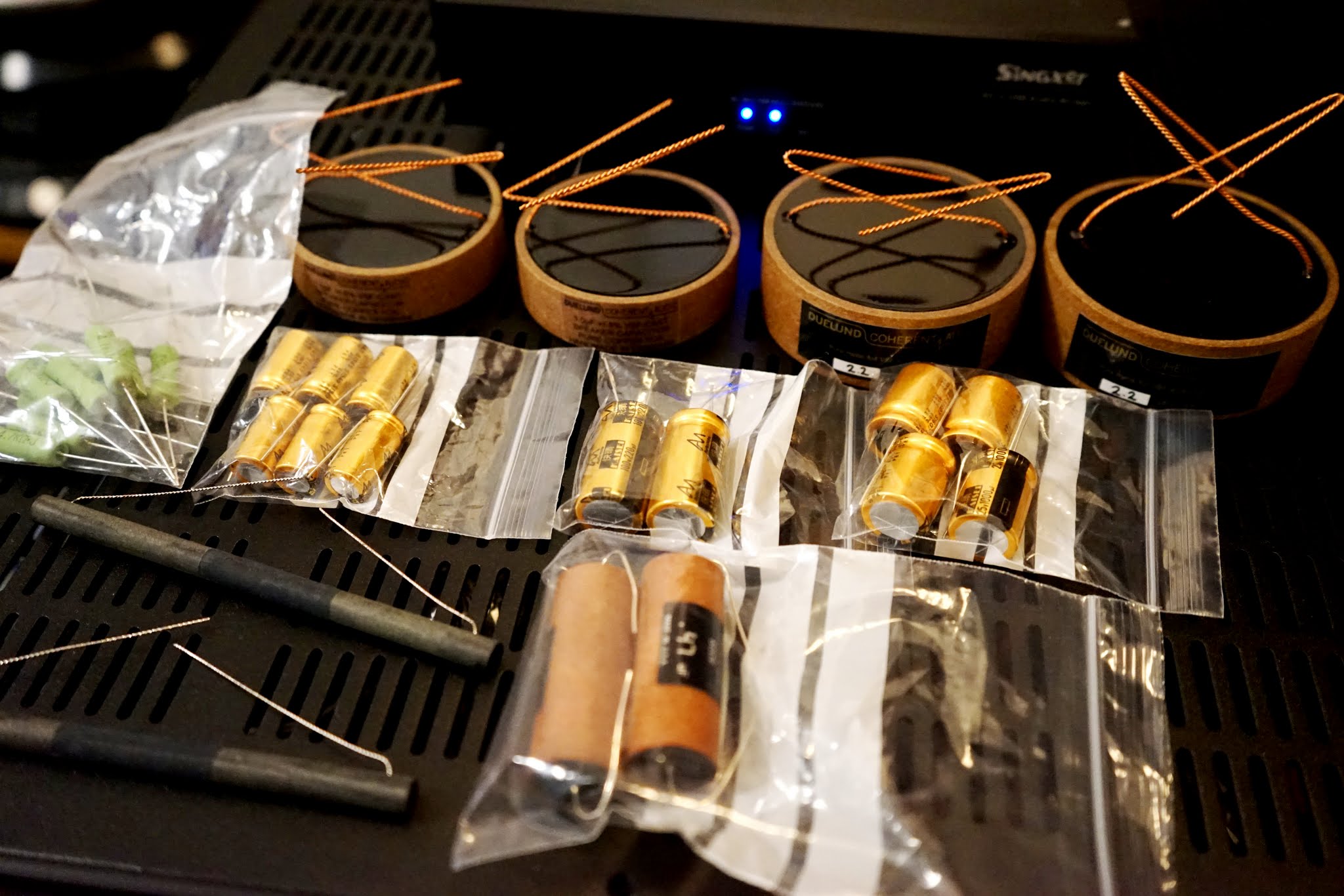
In short the digital signal path right now:
DAC (mod. ANK DAC 5.1 signature): AD1865 da-chip --> 470R 2W ANUK non-magentic tantalum I/V resistor --> Noguchi FM-1010N I/V transformer in 1:2 step up --> 101D tube --> Noguchi FM 10k-600CT transformer -->
Pre-amp: (mod. Coincident Statement Line Stage) ---> J&K made Permalloy core TVC (transformer volume control) --> 101D tube --> Noguchi FM-10k-600CT transformer -->
Amp (mod. Line Magentic LM210IA): --> 310A tube --> 0,47µF Jupiter copper foil/wax/paper capacitor -->
300B tube --> Noguchi FM-24WS-3k transformer --> Speaker
Last year or so I have been ordering some Finemet output transformers and chokes for my tube electronics from Noguchi Trans of Japan and I wanted to share my experience and knowledge of them thus far.
I find their transformers and chokes with Finemet core to sound exquisitely good. They please me both objectively and subjectively speaking. Finemet core is the ultimate in neutrality, clarity and refinement, yet they are very smooth, liquid and delicate. Treble is airy and finely nuanced. Also bass has much more color and "low level vibration" than standard SiFe transformers. The amount of low level information is massive when everything "clicks".
Noguchi transformers all have had great bass extension and very low "saturation distortion" (rise of H3) at the bottom end. I believe this kind of winding style (high primary inductance) is necessary when using Finemet and other more exotic materials, otherwise the sound can potentially be tilted towards high freqs as bass looses it's power and the very airy treble gets to dominate.
I have found the chokes in the PSU do affect the sound the way that the output transformers do, but not in the same extent. The effect of PSU chokes, like caps and resistors, cannot be neglected when seeking the ultimate.
So far I have total 4 pairs of Finemet transformers (two in the DAC, one in the pre and the output trafos of the amp) and 6pcs of Finemet chokes + 1 choke as an AC stabilizing choke. Also three chokes are yet to arrive, they are going to filter my DAC's three power supplies for digital parts. I have potted many of the unpotted variety of chokes and transformers inside a layer of quartz/magmatic rock and epoxy, which I find as a good practice when the space is not constricted. All the Finemet stuff I have is wound on double C-core, trafos and chokes.
Noguchi chokes have to my understanding very low paracitic capacitance in order of 100-145pF (even after potting which raises it slightly, 10-25pF) using my capacitance meter (comparison to Hammond 193J = 350pF) which is good when the core itself is very wide bandwidth and can act as an inductor/filter to considerably high frequencies. High freqs do not get a free pass accros the winding layers when the parasitic capacitane is kept low.
I have understood Noguchi does not sell directly overseas. I have used "J-goods" proxy purchase service and can recommend them. Acoustic Dimension also carries their range but naturally one middleman adds to the price compared to direct import.
Have a nice weekend!
My DAC, Finemet I/V transformers (Noguchi FM-1010N in 1:2) and Finemet output transformers (potted FM-10K-600CT) and 2pcs og potted FMC-3070H chokes).
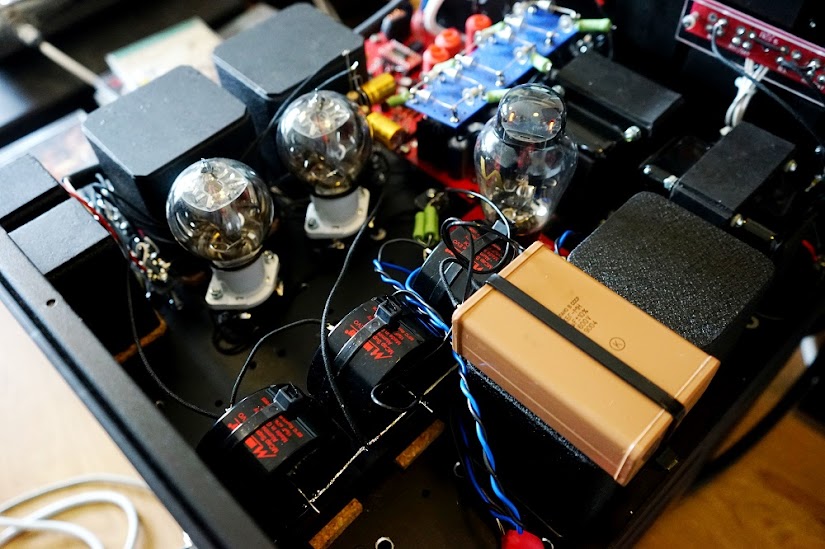
WE91B based LM210IA amplifier with thoroughly revised components incl. Noguchi FM-24WS-3k output transformers and 2pcs of Finemet chokes.
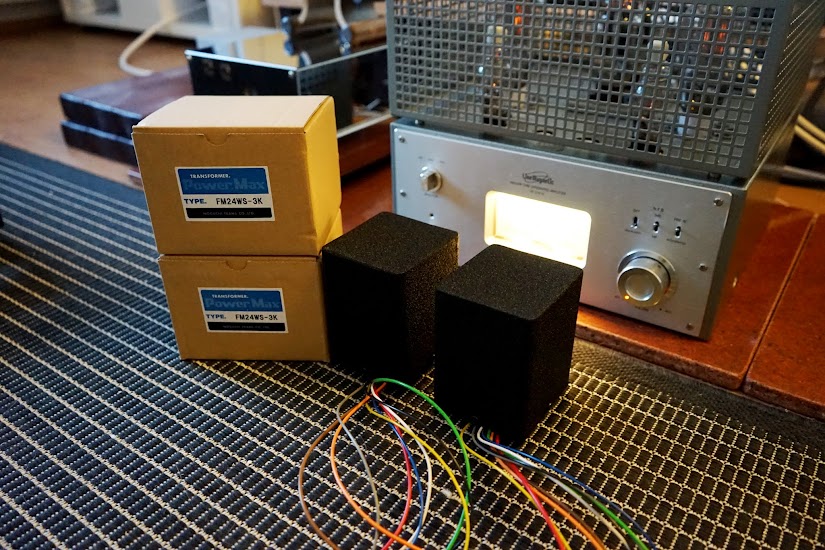
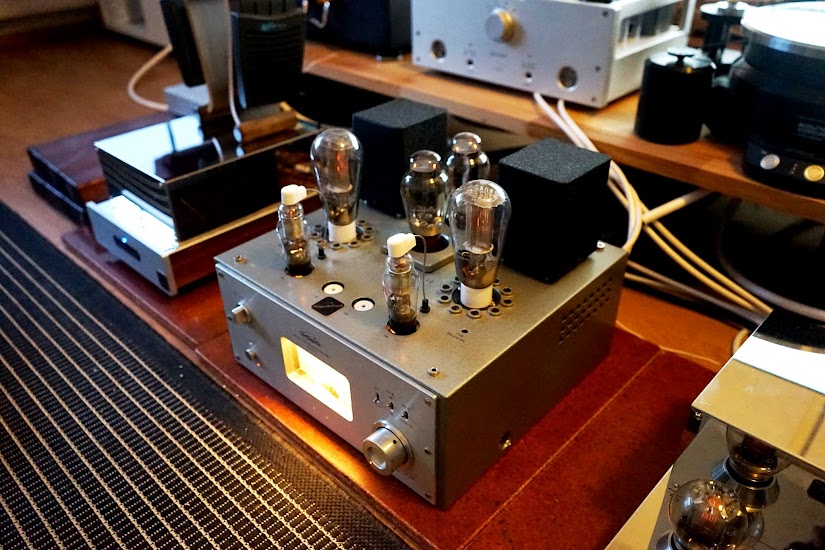
Tube pre amp (Coincident Statement Line Stage) with thoroughly revised components (cannot seem to be happy with any commercial product) and 2pcs of Finemet chokes (FMC-3070H) and Finemet output transformers (FM-10K-600CT). The TVC's are J&K made into Permalloy core, which are also excellent. These two core materials can be mixed with good results, and also Finemet cores with very smooth and delicate sounding Amtrans/Takman carbon film resistors, Audio Note Kaisei lytics and AN non-magnetic tantalum resistors like to paired together. Also Jensen PP in Oil caps are one of my favourites in poly category. Smoooth... Russian KBG-MN's also in every piece of equipment as the "first" capacitor after rectification, very good caps.

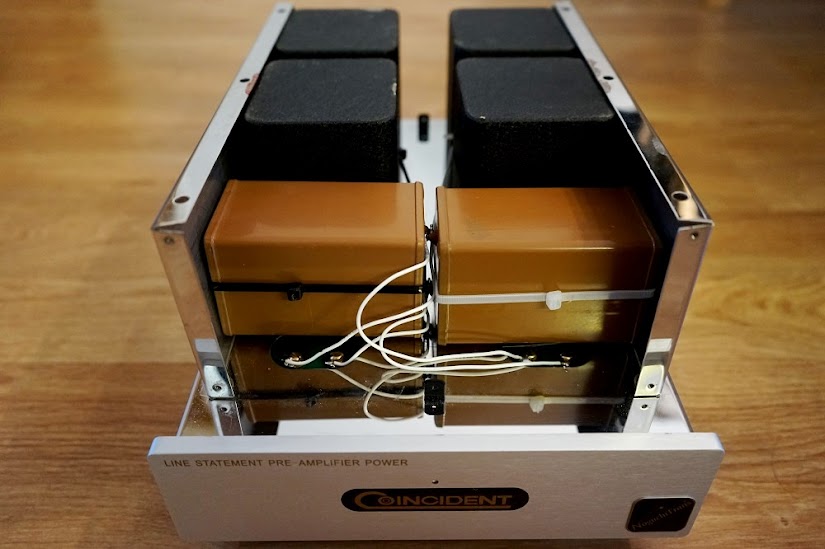
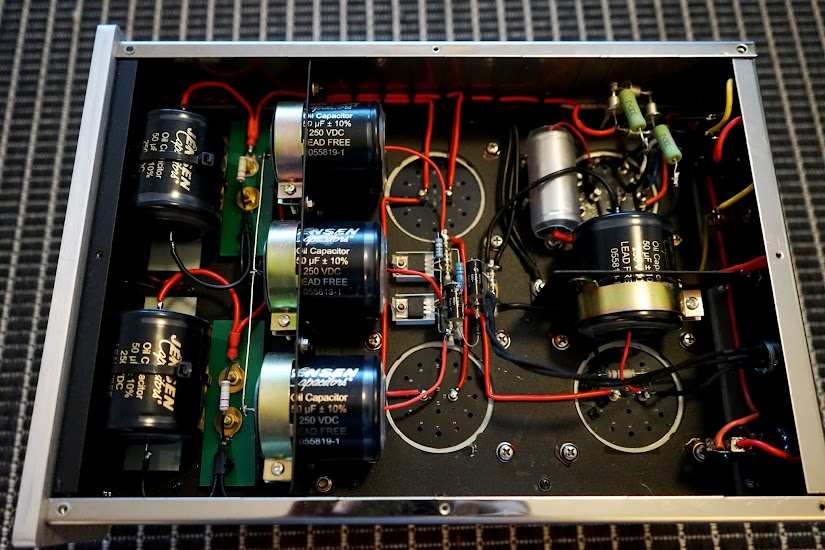
I find their transformers and chokes with Finemet core to sound exquisitely good. They please me both objectively and subjectively speaking. Finemet core is the ultimate in neutrality, clarity and refinement, yet they are very smooth, liquid and delicate. Treble is airy and finely nuanced. Also bass has much more color and "low level vibration" than standard SiFe transformers. The amount of low level information is massive when everything "clicks".
Noguchi transformers all have had great bass extension and very low "saturation distortion" (rise of H3) at the bottom end. I believe this kind of winding style (high primary inductance) is necessary when using Finemet and other more exotic materials, otherwise the sound can potentially be tilted towards high freqs as bass looses it's power and the very airy treble gets to dominate.
I have found the chokes in the PSU do affect the sound the way that the output transformers do, but not in the same extent. The effect of PSU chokes, like caps and resistors, cannot be neglected when seeking the ultimate.
So far I have total 4 pairs of Finemet transformers (two in the DAC, one in the pre and the output trafos of the amp) and 6pcs of Finemet chokes + 1 choke as an AC stabilizing choke. Also three chokes are yet to arrive, they are going to filter my DAC's three power supplies for digital parts. I have potted many of the unpotted variety of chokes and transformers inside a layer of quartz/magmatic rock and epoxy, which I find as a good practice when the space is not constricted. All the Finemet stuff I have is wound on double C-core, trafos and chokes.
Noguchi chokes have to my understanding very low paracitic capacitance in order of 100-145pF (even after potting which raises it slightly, 10-25pF) using my capacitance meter (comparison to Hammond 193J = 350pF) which is good when the core itself is very wide bandwidth and can act as an inductor/filter to considerably high frequencies. High freqs do not get a free pass accros the winding layers when the parasitic capacitane is kept low.
I have understood Noguchi does not sell directly overseas. I have used "J-goods" proxy purchase service and can recommend them. Acoustic Dimension also carries their range but naturally one middleman adds to the price compared to direct import.
Have a nice weekend!
My DAC, Finemet I/V transformers (Noguchi FM-1010N in 1:2) and Finemet output transformers (potted FM-10K-600CT) and 2pcs og potted FMC-3070H chokes).
WE91B based LM210IA amplifier with thoroughly revised components incl. Noguchi FM-24WS-3k output transformers and 2pcs of Finemet chokes.
Tube pre amp (Coincident Statement Line Stage) with thoroughly revised components (cannot seem to be happy with any commercial product) and 2pcs of Finemet chokes (FMC-3070H) and Finemet output transformers (FM-10K-600CT). The TVC's are J&K made into Permalloy core, which are also excellent. These two core materials can be mixed with good results, and also Finemet cores with very smooth and delicate sounding Amtrans/Takman carbon film resistors, Audio Note Kaisei lytics and AN non-magnetic tantalum resistors like to paired together. Also Jensen PP in Oil caps are one of my favourites in poly category. Smoooth... Russian KBG-MN's also in every piece of equipment as the "first" capacitor after rectification, very good caps.
Last edited:
Some new stuffs.
Small video clip: https://www.youtube.com/watch?v=Su9bwMxGbJo
Duelund Cast Cu caps, Cast silver resistors and Janzen 12AWG wax coils for the crossover remake
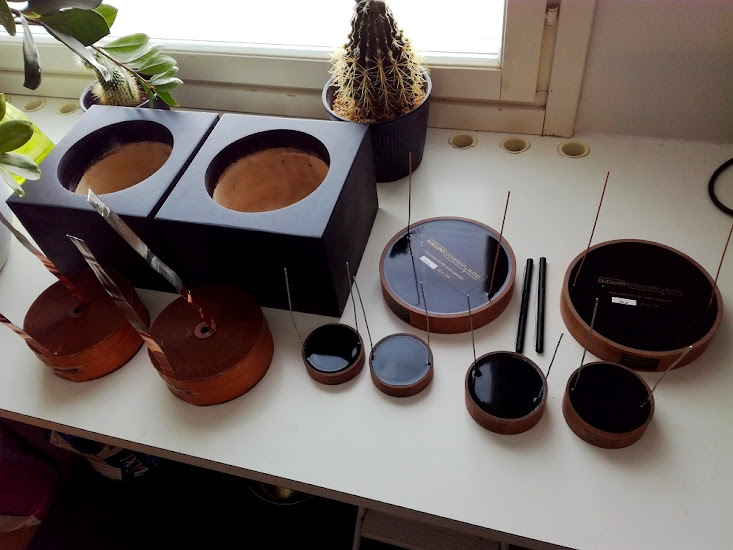
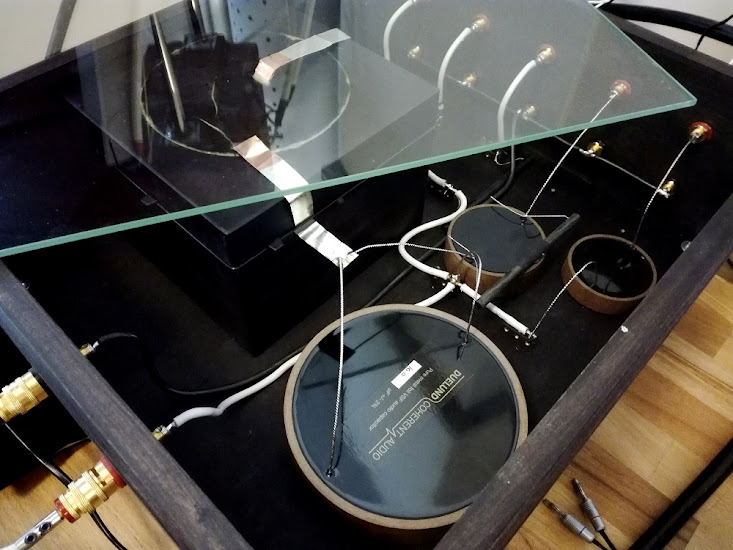
Balanced isolation transformers and "stabilizing chokes" got a new box
These are quite good 300B tubes, Shuguang Treasure 300B-Z
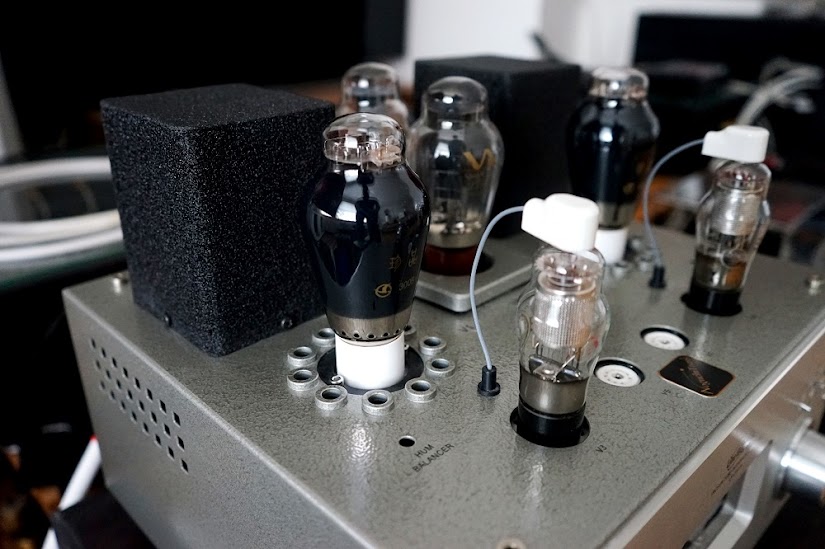
GU-50 tubes can be used with adapters I made myself for the "budget tubing setup". GU50 is really good tube... and fffing cheap. Recommended for an cheaper alternative tube for every 300B enthusiast.

CDT Four with slight power mods like CMR-mode connected Lundahl chokes separating the regulators from their loads (laser/digi and the motor) and low "crossover distortion" germanium diodes with big series damping resistors
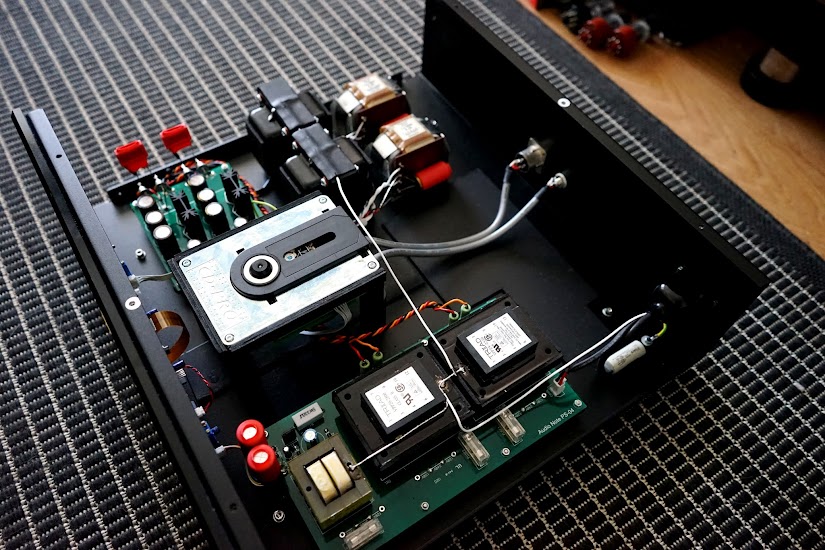
My DAC . Inside there are four Noguchi Finemet signal transformers, 5 Noguchi Finemet chokes, one Lundahl choke and 4 power transformers feeding everything separately. Monolith Magnetics has made the three silver power transformers out of Hi-B double-C core and maximal primary/secondary isolation to my spec. This thing is quite heavy for a DAC. One can choose between transformer coupled output and anode choke loaded, capacitor coupled output. I use currently KBG-MNs for coupling caps, and also the first cap in the anode PSU.
. Inside there are four Noguchi Finemet signal transformers, 5 Noguchi Finemet chokes, one Lundahl choke and 4 power transformers feeding everything separately. Monolith Magnetics has made the three silver power transformers out of Hi-B double-C core and maximal primary/secondary isolation to my spec. This thing is quite heavy for a DAC. One can choose between transformer coupled output and anode choke loaded, capacitor coupled output. I use currently KBG-MNs for coupling caps, and also the first cap in the anode PSU.
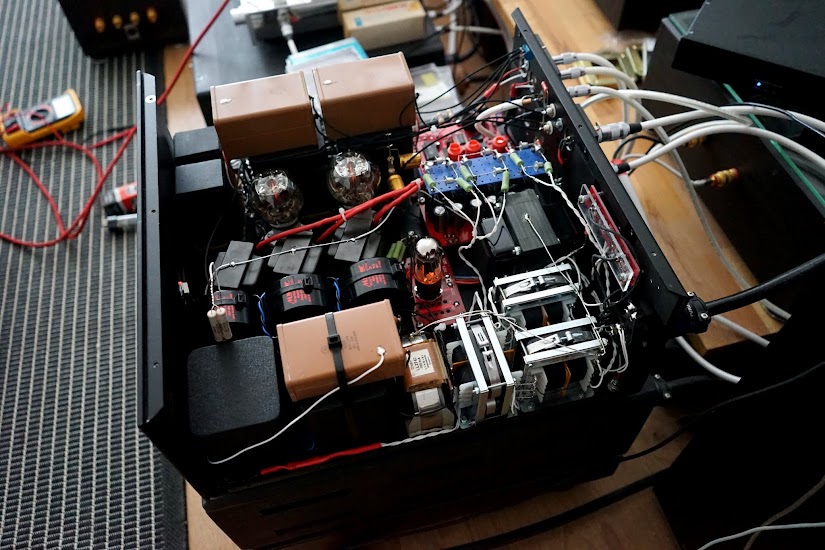
Beautiful UX201A tubes. Also my pre has both transformer coupled output and anode choke loaded, capacitor coupled output. Also KBG-MN coupling caps like in DAC. They have good price performance ration in my opinion, no need for Duelund with my goals regarding the capacitor coupled output (it's always second to transformer coupling).

6SN7 tubes with adapters, for the low budget but good quality tubing when I feel I don't want to burn the DHT variants
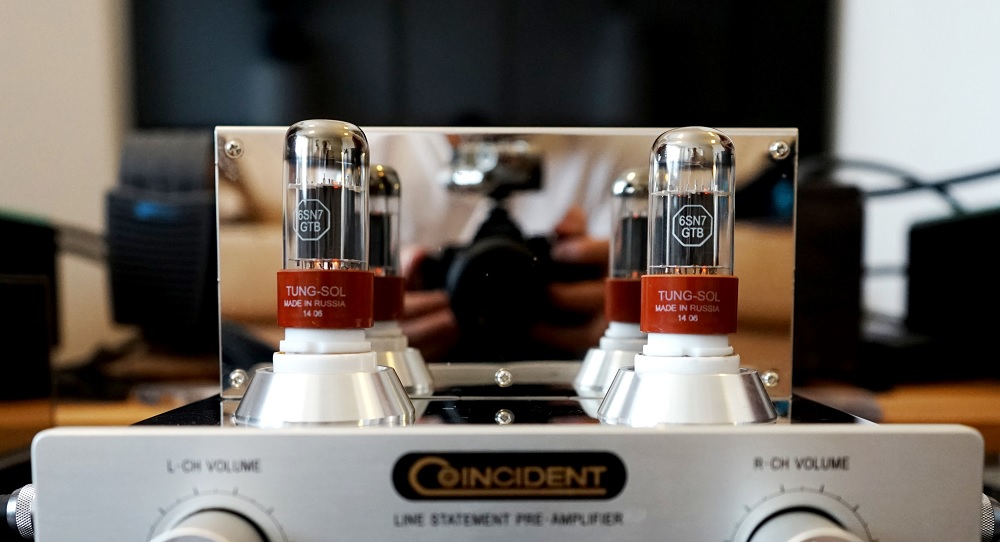
Fostex T500A MKII super tweeters. Raal amorphous lazy ribbons are still my ambience tweeters. Fostex has beautiful sound.
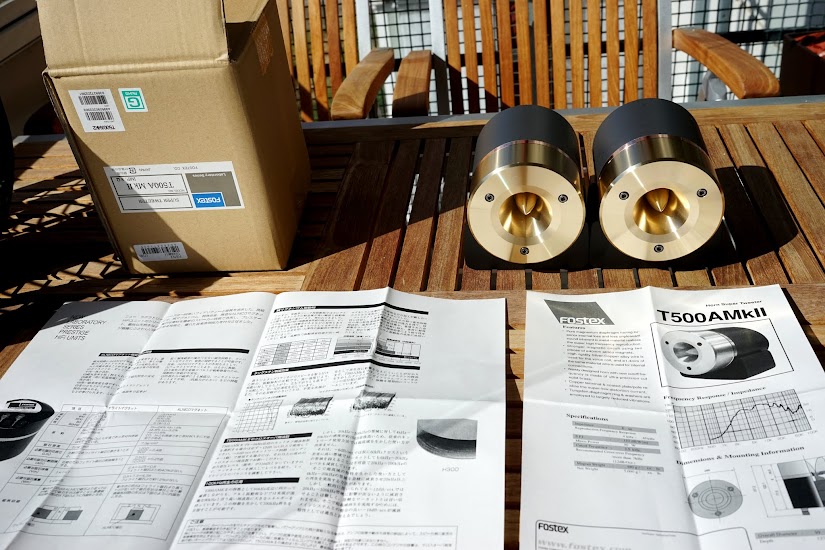
Small video clip: https://www.youtube.com/watch?v=Su9bwMxGbJo
Duelund Cast Cu caps, Cast silver resistors and Janzen 12AWG wax coils for the crossover remake
Balanced isolation transformers and "stabilizing chokes" got a new box
An externally hosted image should be here but it was not working when we last tested it.
These are quite good 300B tubes, Shuguang Treasure 300B-Z
GU-50 tubes can be used with adapters I made myself for the "budget tubing setup". GU50 is really good tube... and fffing cheap. Recommended for an cheaper alternative tube for every 300B enthusiast.
CDT Four with slight power mods like CMR-mode connected Lundahl chokes separating the regulators from their loads (laser/digi and the motor) and low "crossover distortion" germanium diodes with big series damping resistors
My DAC
Beautiful UX201A tubes. Also my pre has both transformer coupled output and anode choke loaded, capacitor coupled output. Also KBG-MN coupling caps like in DAC. They have good price performance ration in my opinion, no need for Duelund with my goals regarding the capacitor coupled output (it's always second to transformer coupling).
6SN7 tubes with adapters, for the low budget but good quality tubing when I feel I don't want to burn the DHT variants
Fostex T500A MKII super tweeters. Raal amorphous lazy ribbons are still my ambience tweeters. Fostex has beautiful sound.
Last edited:
/867
They are not direct replacement because heater voltage is different. I have adjustable heater supplies so the change is easy for me. But otherwise you can run GU50 in every 300B amp with an adapter, plug it in, change the heater voltage and there you go. They have very similar curves/traces and withstand the same operation points.
Yes there is difference in the sound. 300B is more laid back and more authoritative, GU50 has IMO more "objective" sound and good details. Naturally GU50 measures worse it being a pseudotriode and up agains one of the most linear devices in the world. There are also lots of similarities in the sound, I listen happily to both of them and after 5 minutes either one is accepted like countertfeit money. I like them both. GU-50 is one of my favourite tubes and I cannot think of a better tube for "low budget tubing" setup in my system. I'm not saying it's better than 300B.
GU-50 starts to sing it's best after some 50 hours of usage and several hot-cold cycles. With triode connected GU-50 one gets best outcome when conneting both the g2 and g3 to anode. I also use a 270ohm resistor to connect them to damp possible RFI resonances.
Nice gear porn
So GU50 is a direct replacement for 300b? Does that mean I can run 300b tubes in my GU50 amp?
Do you notice a difference in sound between the tubes?
They are not direct replacement because heater voltage is different. I have adjustable heater supplies so the change is easy for me. But otherwise you can run GU50 in every 300B amp with an adapter, plug it in, change the heater voltage and there you go. They have very similar curves/traces and withstand the same operation points.
Yes there is difference in the sound. 300B is more laid back and more authoritative, GU50 has IMO more "objective" sound and good details. Naturally GU50 measures worse it being a pseudotriode and up agains one of the most linear devices in the world. There are also lots of similarities in the sound, I listen happily to both of them and after 5 minutes either one is accepted like countertfeit money. I like them both. GU-50 is one of my favourite tubes and I cannot think of a better tube for "low budget tubing" setup in my system. I'm not saying it's better than 300B.
GU-50 starts to sing it's best after some 50 hours of usage and several hot-cold cycles. With triode connected GU-50 one gets best outcome when conneting both the g2 and g3 to anode. I also use a 270ohm resistor to connect them to damp possible RFI resonances.
Last edited:
Couple more videos:
Lucy Rose: https://www.youtube.com/watch?v=ePgkxB1yES8
Nils Lofgren: https://www.youtube.com/watch?v=D8q8yHtka4A
Lucy Rose: https://www.youtube.com/watch?v=ePgkxB1yES8
Nils Lofgren: https://www.youtube.com/watch?v=D8q8yHtka4A
The "final solution" to the amp, I revamped the 300B/GU-50's driver stage to 101D/UX201A (etc.) + Noguchi FM728D interstage at 1:2 step-up ratio. The visible switch changes the circuit into capacitor coupled form (Duelund Cast Cu DC) where the primary of the transformer acts as a anode choke.
Everything falls in place always with this simplistic "101D et al." circuit, component choices and the choke separated DC heater supply. That's why I have replicated it everywhere, DAC, preamp and now also the power amp
An externally hosted image should be here but it was not working when we last tested it.
Last edited:
- Home
- Loudspeakers
- Multi-Way
- Legis' Horny Tales